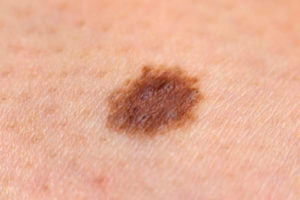 Healthy living is at the forefront for most Americans, more so now than ever before. It is difficult to pick up a newspaper and not see an article that has to do with diet, exercise, or the importance of sleep or stress management. The most common cancer of all is skin cancer. Fortunately most skin cancers are completely curable if detected at an early stage. Even the more aggressive skin cancers, such as melanoma can be cured if removed early. Unlike many other organs which are internal, the skin is easily accessible for examination. This underscores the importance of seeing your dermatologist regularly.
Healthy living is at the forefront for most Americans, more so now than ever before. It is difficult to pick up a newspaper and not see an article that has to do with diet, exercise, or the importance of sleep or stress management. The most common cancer of all is skin cancer. Fortunately most skin cancers are completely curable if detected at an early stage. Even the more aggressive skin cancers, such as melanoma can be cured if removed early. Unlike many other organs which are internal, the skin is easily accessible for examination. This underscores the importance of seeing your dermatologist regularly.
Basal cell and squamous cell carcinoma are the most common skin cancers. They usually present as a non-healing sore. In the beginning phase they can mimic a bite, burn, or an injury but are different because they persist. These skin cancers mostly occur on sun exposed skin.
Metastasis is the process where the cancer leaves the site of origin and travels to a distant location. For example, breast cancer is not dangerous because the cancer affects the breast; it is dangerous because the cancer leaves the site of origin and travels to a vital organ such as the brain or liver. Basal cell carcinoma almost never metastasizes and squamous cell carcinoma usually will only metastasize if it is neglected. Therefore these two most common skin cancers are very treatable and curable.
Melanoma is a more dangerous skin cancer. Melanoma has a tendency to leave the skin and travel to other vital organs. Still, if a melanoma is removed at an early stage, it is a completely curable skin cancer.
Melanoma can occur any where on the body, it is not restricted to sun exposed skin. Melanoma is increasing at a very fast rate. Twenty five years ago the incidence of melanoma was one out of 140, today it is closer to 1 out of 50. Melanoma is the number 2 cancer in teenagers. It is the most common cancer in women aged 25-29.
One contributing factor is the use of tanning beds.
Although melanoma is increasing in the younger population, age is also a risk factor, so the older a person gets, the more likely it is to get melanoma. Genes play a role. If you have a first degree family member with a melanoma, you are more likely to get a melanoma. In the US, one person an hour dies of melanoma.
Melanoma looks like a funny mole. An easy-to-remember memory tool for what melanoma can look like on the skin is the first 5 letters of the alphabet:
A: asymmetry, one side is not the mirror image of the other
B: borders that are irregular, poorly defined or indistinct
C: color, multiple colors, changing color, black in color
D: diameter greater than 6mm, or larger than a pencil eraser
E: evolving; change in size, shape, color, bleeding, symptoms
When considering skin cancer prevention, three considerations are important:
1. Sun protection:
a. Sunscreen: make sure you apply 15 minutes before going outside in air-conditioning and reapply every 2-3 hours. Physical blockers like zinc and titanium are best.
b. Clothing: brimmed hat or long sleeves, a big umbrella at the beach.
c. Time of day: try to schedule your activity before 10am or after 4pm.
2. Self examinations on a regular basis, use a spouse to help look at your back.
3. See a dermatologist regularly.
There are many keys to a healthy life; eat your vegetables, go for a walk or run, shut off the electronics and hit the hay, meditate. Don’t forget the easiest one: put on some sunscreen and see your dermatologist.
Dermatology Associates of Central Florida
3670 Innovation Drive, Lakeland, Florida 33812
863.686.2282
www.dermatologylakeland.com
 Central Florida Health and Wellness Magazine Health and Wellness Articles of the Villages
Central Florida Health and Wellness Magazine Health and Wellness Articles of the Villages



